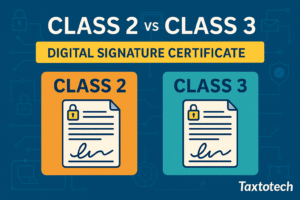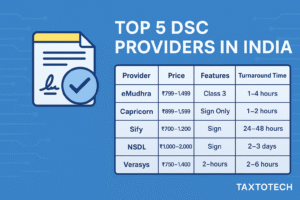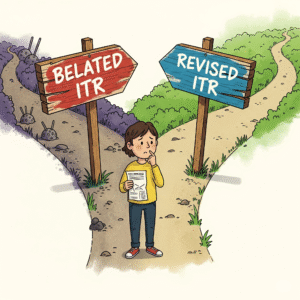Are you a family in the U.S. looking for ways to boost your financial well-being? Get ready, Taxtotech Readers, because there’s exciting news on the horizon that could significantly impact your household budget! Imagine the possibility of a $3,500 Child Tax Credit Refund hitting your bank account as early as July 2025. This isn’t just a hopeful dream; it’s a scenario that could become reality if ongoing legislative discussions in Washington come to fruition, aiming to expand this vital family benefit.
At Taxtotech, we understand that navigating the world of taxes, financial technology, and government programs can feel like a labyrinth. Our mission is to illuminate these complex areas, bringing you clarity and actionable insights. That’s why we’re diving deep into the specifics of this potential Child Tax Credit 2025 expansion, exploring what it could mean for your family, who might be eligible, and when you could see those much-anticipated funds. Stay with us as we break down the IRS eligibility requirements and projected deposit dates, ensuring you’re fully prepared to seize this potential financial opportunity.
What is the $3,500 Child Tax Credit Refund? Understanding the Potential Expansion
The Child Tax Credit (CTC) has long been a cornerstone of federal support for American families, designed to help offset the costs of raising children. Historically, the credit has offered up to $2,000 per qualifying child, with a portion of that being refundable – meaning you could get it back as a refund even if it exceeded your tax liability.
However, the $3,500 Child Tax Credit Refund represents a significant potential enhancement. This higher amount, along with the possibility of advance payments directly to families, echoes the temporary expansion of the CTC under the American Rescue Plan (ARP) in 2021. During that period, the credit temporarily increased to $3,600 for children under age 6 and $3,000 for children aged 6 to 17, and importantly, it became fully refundable and was disbursed in monthly advance payments from July to December.
While the current federal CTC for tax year 2024 (filed in 2025) is primarily up to $2,000 per child (with a maximum refundable portion of $1,700 for 2025, based on inflation adjustments), discussions are actively underway in Congress regarding new bipartisan legislation. This proposed legislation aims to make the credit more generous and accessible, particularly for lower-income families, and could potentially reintroduce advance monthly payments. The “$3,500” figure in our discussion reflects the aspirations of some of these proposals, which seek to return the credit to levels that significantly impact family budgets. It’s crucial to understand that this specific $3,500 refund amount and the July 2025 advance payment date are contingent on new federal legislation being passed and signed into law. We at Taxtotech will keep a close eye on legislative developments to bring you the most accurate updates.
IRS Eligibility for the $3,500 Child Tax Credit Refund
While the specific amount of the credit might change with new legislation, the fundamental eligibility criteria for claiming the Child Tax Credit generally remain consistent. For families hoping to receive a potential $3,500 Child Tax Credit Refund in July 2025, understanding these IRS guidelines is paramount.
Qualifying Child Criteria
To claim the credit for a child, they must meet several key requirements:
- Age: The child must be under age 17 at the end of the tax year (e.g., December 31, 2025).
- Relationship: The child must be your son, daughter, stepchild, foster child, brother, sister, half-brother, half-sister, stepbrother, stepsister, or a descendant of any of them (e.g., a grandchild).
- Support: The child must not have provided more than half of their own support for the tax year.
- Residency: The child must have lived with you for more than half of the tax year (with some exceptions for temporary absences).
- Citizenship: The child must be a U.S. citizen, U.S. national, or U.S. resident alien.
- Dependent Status: You must claim the child as a dependent on your federal income tax return.
- Social Security Number (SSN): The child must have a valid SSN issued by the Social Security Administration.
Income Requirements
The Child Tax Credit, including any expanded version, typically phases out for higher-income earners. While the exact phase-out thresholds for a potential $3,500 credit in 2025 would depend on the specific legislation, generally:
- The credit begins to phase out at certain Modified Adjusted Gross Income (MAGI) levels.
- For the current $2,000 credit, this threshold is $200,000 for single filers, head of household, and qualifying widow(er)s, and $400,000 for married couples filing jointly. A larger credit, like $3,500, would likely maintain or adjust these thresholds to target the benefit effectively.
Residency and Relationship Tests
These tests ensure that the child you are claiming genuinely resides with you and has a qualifying relationship. The “more than half the year” residency rule is strict, though temporary absences (like for school or vacation) usually count as time lived with you. The relationship test is designed to cover biological, adopted, step, and foster children, as well as certain relatives, reflecting the diverse structures of American families.
Table 1: Potential $3,500 Child Tax Credit Eligibility Checklist (Based on common CTC criteria)
| Requirement Category | Specific Criteria | Your Status | Notes |
|---|---|---|---|
| Child’s Age | Under age 17 at the end of the tax year (e.g., Dec 31, 2025) | [Yes/No] | This is for the potential 2025 credit. |
| Relationship | Son, daughter, stepchild, foster child, sibling, or descendant (e.g., grandchild) | [Yes/No] | Adopted children count as your own. |
| Support | Child did NOT provide more than half of their own support for the year | [Yes/No] | Excludes scholarships for full-time students. |
| Residency | Child lived with you for more than half of the tax year | [Yes/No] | Temporary absences (school, vacation, illness) count. Special rules for divorced/separated parents. |
| Citizenship | Child is a U.S. citizen, U.S. national, or U.S. resident alien | [Yes/No] | Must have a valid Social Security Number (SSN). |
| Dependent Status | You claim the child as a dependent on your federal income tax return | [Yes/No] | Cannot be claimed as a dependent by another person. |
| Income Threshold | Your Modified Adjusted Gross Income (MAGI) is below the phase-out limit (e.g., $200K single, $400K married filing jointly for current CTC, potentially similar for new) | [Yes/No] | Exact MAGI limits for $3,500 CTC would be set by new legislation. |
Navigating Deposit Dates: When to Expect Your $3,500 Child Tax Credit Refund
The prospect of a $3,500 Child Tax Credit Refund coming in July 2025 implies a return to a system of advance payments, similar to what many families experienced in 2021. During that period, the IRS sent out half of the estimated credit amount in monthly installments, allowing families to access funds throughout the year rather than waiting for their tax refund.
If new legislation passes to enable a Child Tax Credit 2025 expansion and advance payments, July 2025 would likely mark the beginning of these monthly disbursements. This means families wouldn’t have to wait until they file their 2025 tax return in early 2026 to receive the full benefit. Instead, a portion of the credit would be sent directly to them each month, providing a consistent financial boost.
Direct Deposit vs. Paper Check
The quickest and most secure way to receive any tax refund or advance payment from the IRS is via direct deposit. If the $3,500 CTC refund were to be paid in advance, families who have provided their bank account information to the IRS (typically through a previous tax filing) would likely receive their payments directly into their accounts. This method dramatically speeds up access to funds and reduces the risk of lost or stolen checks.
For those without direct deposit information on file, the IRS would typically send paper checks, which can take several days or even weeks longer to arrive by mail.
Checking Your Refund Status
Should advance payments for the $3,500 Child Tax Credit Refund become a reality, the IRS would almost certainly provide an online tool for families to check their payment status, similar to the “Where’s My Refund?” tool used for tax refunds or the “Child Tax Credit Update Portal” used in 2021.
To use such a tool, you typically need:
- Your Social Security Number (SSN) or Individual Taxpayer Identification Number (ITIN).
- Your filing status (e.g., Single, Married Filing Jointly).
- The exact refund amount expected (or the specific advance payment amount).
The status tracker usually progresses through stages like “Payment Scheduled,” “Payment Sent,” or “Payment Not Applicable.” Remember, the IRS updates these systems once a day, usually overnight, so there’s no need to check multiple times a day.
The Potential Impact of the $3,500 Child Tax Credit Refund
A $3,500 Child Tax Credit Refund, especially if distributed in advance, could have a profound positive impact on millions of American families. For many, this represents a significant financial infusion that can be used for essential needs, directly alleviating economic pressure.
Families might leverage these funds for:
- Covering Daily Expenses: Groceries, utilities, and housing costs.
- Childcare and Education: Easing the burden of childcare expenses or investing in educational materials.
- Healthcare: Paying for medical appointments, prescriptions, or health insurance premiums.
- Debt Reduction: Paying down credit card debt or other high-interest loans.
- Savings: Building an emergency fund or saving for future goals like a child’s education.
- Economic Stimulus: Injecting money directly into local economies as families spend on goods and services.
This level of support aims not only to provide immediate relief but also to contribute to long-term financial stability for families, potentially reducing child poverty and fostering greater economic resilience.
Preparing for Your Potential $3,500 Child Tax Credit Refund with Taxtotech
Even though the $3,500 Child Tax Credit Refund is contingent on new legislation, it’s never too early to prepare. Being proactive ensures you’re ready to claim any benefits you’re eligible for when the time comes. At Taxtotech, we encourage you to:
- Maintain Accurate Records: Keep meticulous records of your dependents’ Social Security numbers, dates of birth, and residency.
- Review Your Income: Understand your Modified Adjusted Gross Income (MAGI) to gauge where you might fall within potential income phase-out ranges.
- Stay Informed: Regularly check reliable sources like IRS.gov and reputable financial news outlets for updates on CTC legislation.
- Ensure Your Filing Information is Current: If advance payments return, the IRS will use the most recent tax return information they have on file. Ensure your address and bank account details are up-to-date.
- Leverage Tax Technology: Modern tax software and online platforms, often powered by the very tech we discuss at Taxtotech, can simplify the filing process and help you accurately claim all eligible credits. For more insights on leveraging technology to manage your finances and taxes efficiently, explore our dedicated tax tech resources at https://taxtotech.com. We delve into everything from AI-powered tax preparation tools to secure digital record-keeping solutions.
Understanding Legislative Changes: Why the $3,500 Child Tax Credit Refund Matters
The journey to a potential $3,500 Child Tax Credit Refund highlights the dynamic nature of U.S. tax policy. The amount and refundability of the CTC are subject to legislative action by Congress. As we’ve seen with the American Rescue Plan’s temporary expansion, significant increases and advance payments require new laws.
The discussions around a new CTC bill reflect a bipartisan interest in supporting working families and children. However, the exact details – including the credit amount, refundability, income thresholds, and whether advance payments would return – are all points of negotiation. The $3,500 figure, if enacted, would represent a substantial increase over the standard $2,000 credit, providing a more robust safety net for families.
Table 2: Key Differences: Standard CTC vs. Potential $3,500 CTC (Illustrative)
| Feature | Current Standard Child Tax Credit (e.g., TY 2024) | Potential $3,500 Child Tax Credit (If New Legislation Passes for TY 2025) | Impact on Families |
|---|---|---|---|
| Max Credit Per Child | Up to $2,000 | Up to $3,500 (Illustrative of proposed bills) | Significantly more financial relief per child. |
| Refundability | Partially refundable (e.g., up to $1,700 for 2025) | Potentially Fully Refundable | More low-income families could receive the full benefit, regardless of tax liability. |
| Payment Method | Claimed on tax return (lump sum refund) | Potentially Advance Monthly Payments (e.g., starting July 2025) | Consistent financial support throughout the year, better for budgeting. |
| Income Thresholds | Phased out at $200K (Single), $400K (MFJ) | Could be similar or adjusted to expand eligibility | Aims to support more middle- and lower-income families. |
This proposed expansion isn’t just about a number; it’s about the philosophy of investing in families and children to foster economic stability and opportunity. We encourage Taxtotech Readers to follow these legislative developments closely, as they have direct implications for your family’s finances.
The Future of Family Tax Benefits
The potential $3,500 Child Tax Credit Refund in July 2025 represents an exciting possibility for millions of American families. While legislative action is still required to finalize this specific amount and the return of advance payments, the ongoing discussions underscore the importance of this credit in supporting household budgets and promoting economic stability.
Staying informed and prepared is key to maximizing your tax benefits. At Taxtotech, we’re dedicated to bringing you the latest developments in tax policy and financial technology, empowering you to make informed decisions for your family’s financial future.
What are your thoughts on a potential $3,500 Child Tax Credit Refund, Taxtotech Readers? How would these funds impact your family? Share your insights and questions in the comments below! And for more in-depth analyses on navigating the ever-evolving landscape of taxes and finance with the power of technology, be sure to explore more articles right here at https://taxtotech.com.
FAQ
Q1: Is the $3,500 Child Tax Credit Refund confirmed for July 2025? A1: The specific amount of $3,500 and the July 2025 advance payment date are currently part of proposed new legislation under discussion in Congress. While there’s strong support, these details are not yet confirmed law. Families should stay updated on legislative developments.
Q2: Who would be eligible for the potential $3,500 Child Tax Credit Refund? A2: Eligibility would generally follow existing Child Tax Credit rules, requiring the child to be under 17, meet relationship, support, residency, and citizenship tests, and have a valid Social Security Number. Income thresholds would apply, likely similar to current phase-out levels for higher earners.
Q3: How would families receive the potential $3,500 Child Tax Credit Refund? A3: If new legislation passes that includes advance payments, families would likely receive a portion of the credit in monthly direct deposits, similar to the American Rescue Plan’s rollout in 2021. The remainder would be claimed when filing their 2025 tax return.
Q4: What if I don’t have direct deposit information on file with the IRS? A4: If you don’t have direct deposit set up, the IRS would typically send paper checks to the address on your most recent tax return. Direct deposit is highly recommended for faster and more secure access to any potential payments.
Q5: How can I check the status of a potential $3,500 Child Tax Credit Refund payment? A5: Should advance payments be approved, the IRS would likely launch an online portal, similar to the “Where’s My Refund?” tool, allowing you to check your payment status using your SSN/ITIN, filing status, and expected payment amount. It’s updated once daily, usually overnight.

















